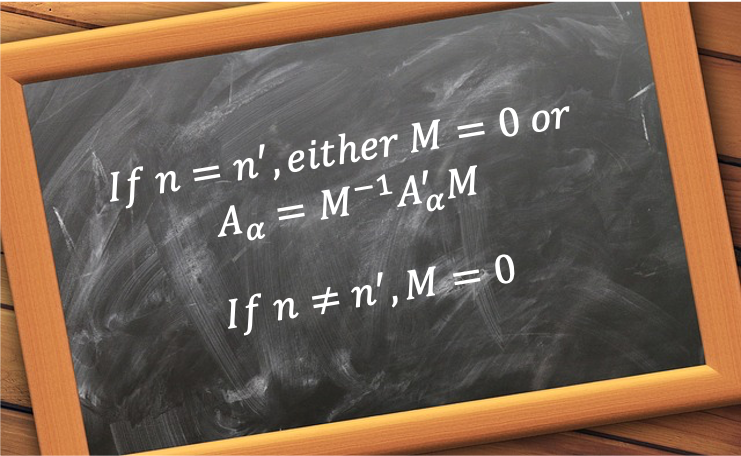Schur’s second lemma describes the restrictions on a matrix that commutes with elements of two distinct irreducible representations, which may have different dimensions.

Consider an arbitrary matrix and two irreducible representations of a group,
of dimension
and
of dimension
, such that
where .
Taking the conjugate transpose of eq10 and using the matrix identity , we have
. As every element of a representation of a group can be expressed as a unitary matrix
via a similarity transformation without any loss of generality, and as
,
Since the inverse property of a group states that and
, we can express eq10 as
Multiplying eq11 on the left by and using eq12, we have
and therefore
, which implies that
commutes with all elements of an irreducible representation of
. With reference to Schur’s first lemma,
where is a constant and
is the identity matrix.
If we multiply eq11 on the right by and repeat the steps above, we have
Let’s consider the following cases for eq13:
Case 1:
Let the -th entry of
be
. If
, we can rewrite eq13 in terms of matrix entries:
. If
, we have
, which implies that
is the zero matrix because
for all
.
Combining eq13 and eq14, we have or
. This implies that
exists if
. We can therefore rewrite eq10 as
, which is a similarity transformation if
.
Case 2:
If , the arbitrary matrix (denoted by
) is an
matrix with reference to eq10. Suppose
; we have:
If we enlarge to form an
matrix
with the additional elements equal to zero, we have
Due to the zeroes, . Taking the determinants,
Using the determinant identities ,
and
, we have
Since one of the columns of is zero,
. So,
, which implies that
must be a zero matrix according to the results of case 1.
Finally, we can summarise Schur’s second lemma as follows:
Given an arbitrary matrix and two irreducible representations,
of dimension
and
of dimension
, where
, then
-
- if
, either
or the representations are related by a similarity transformation, i.e. equivalent representations.
- If
,
.
- if